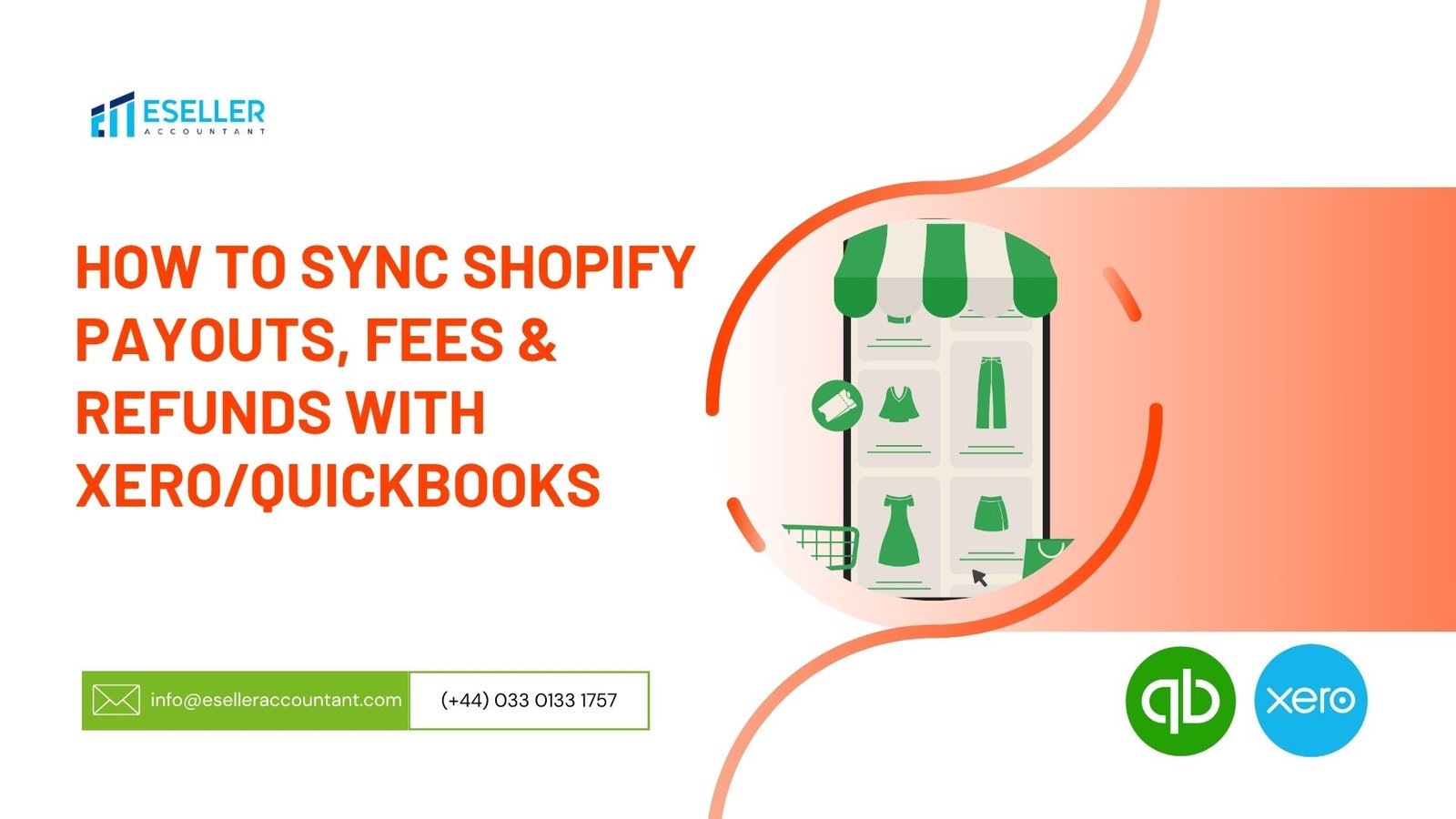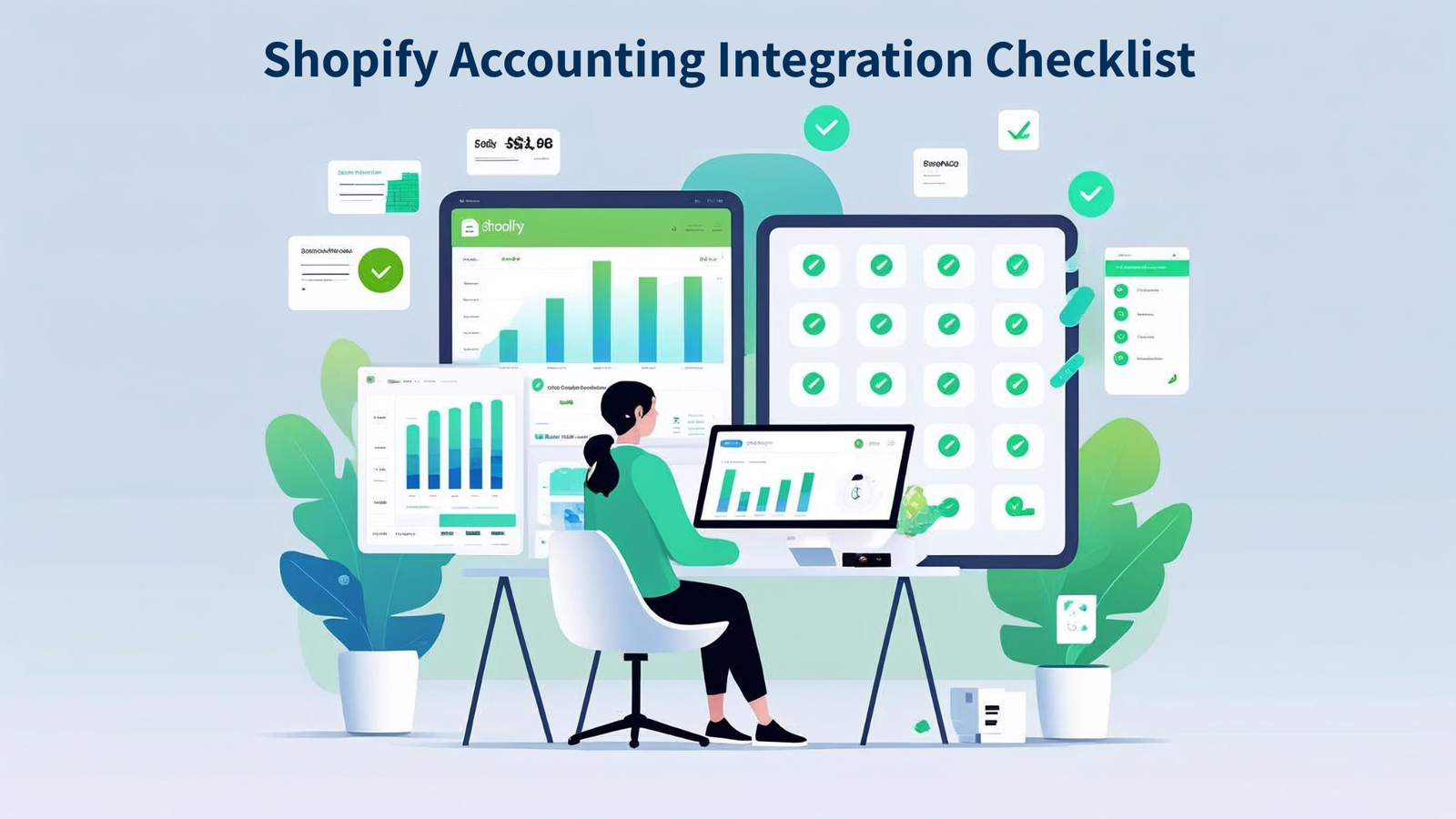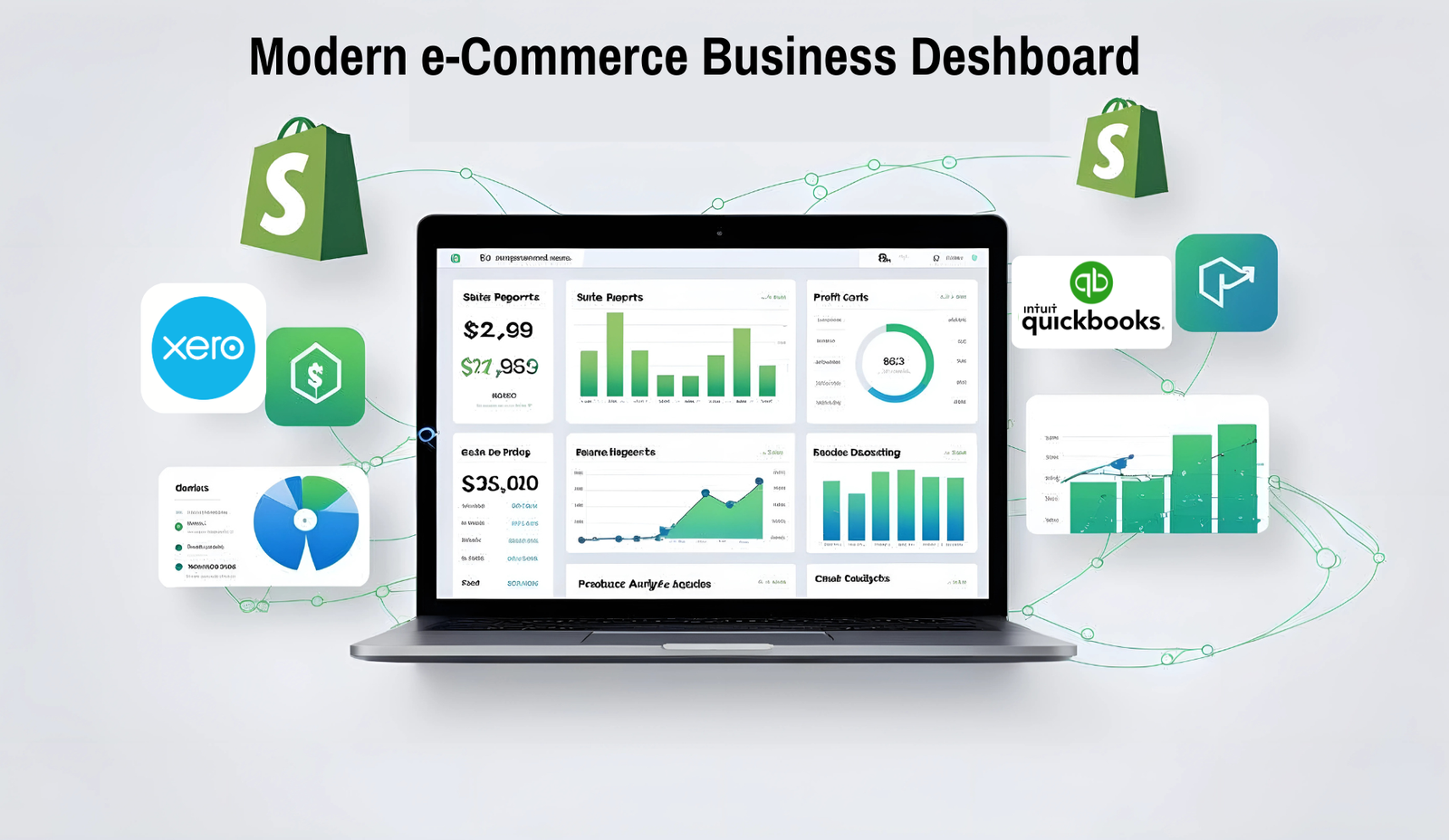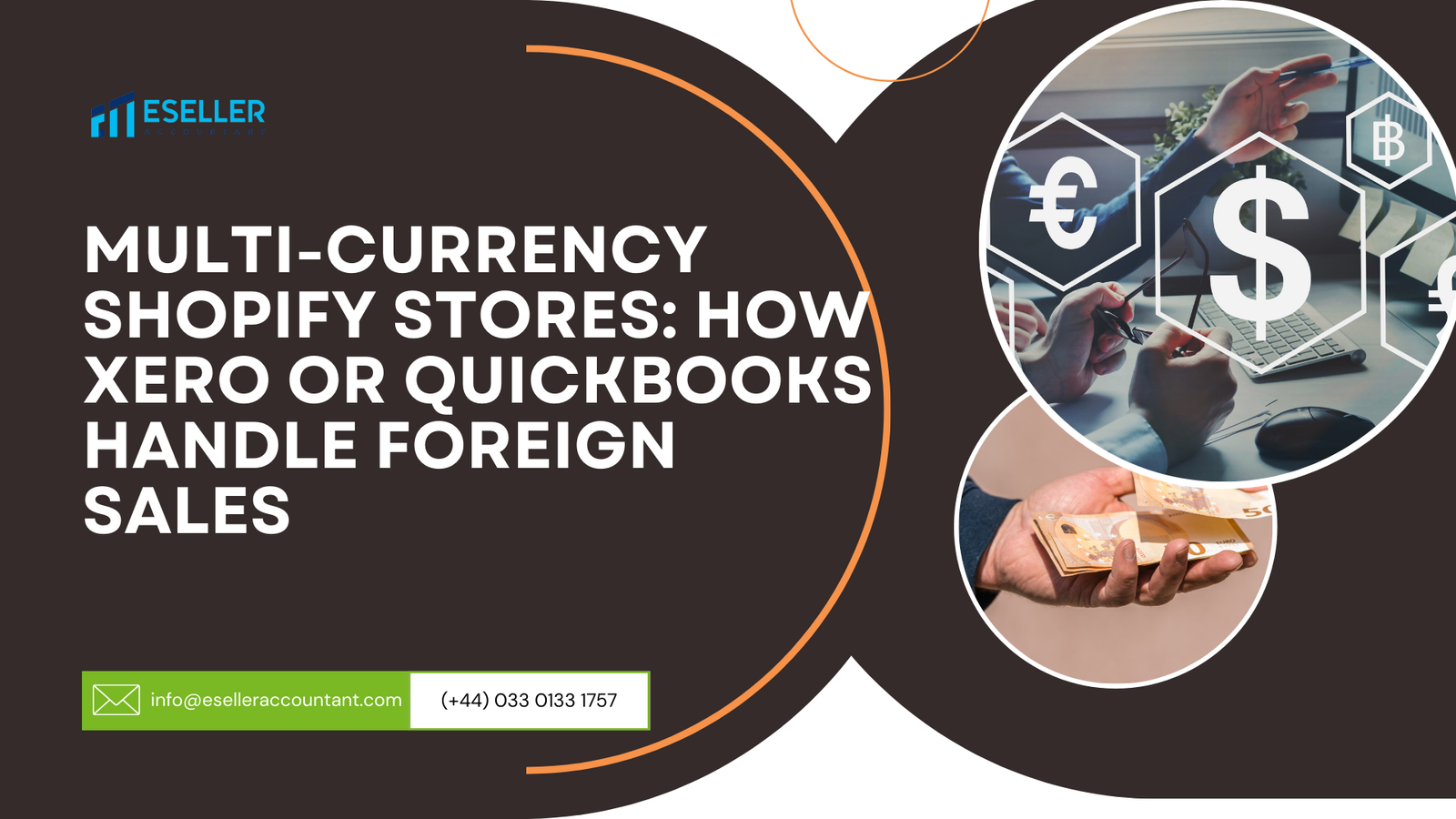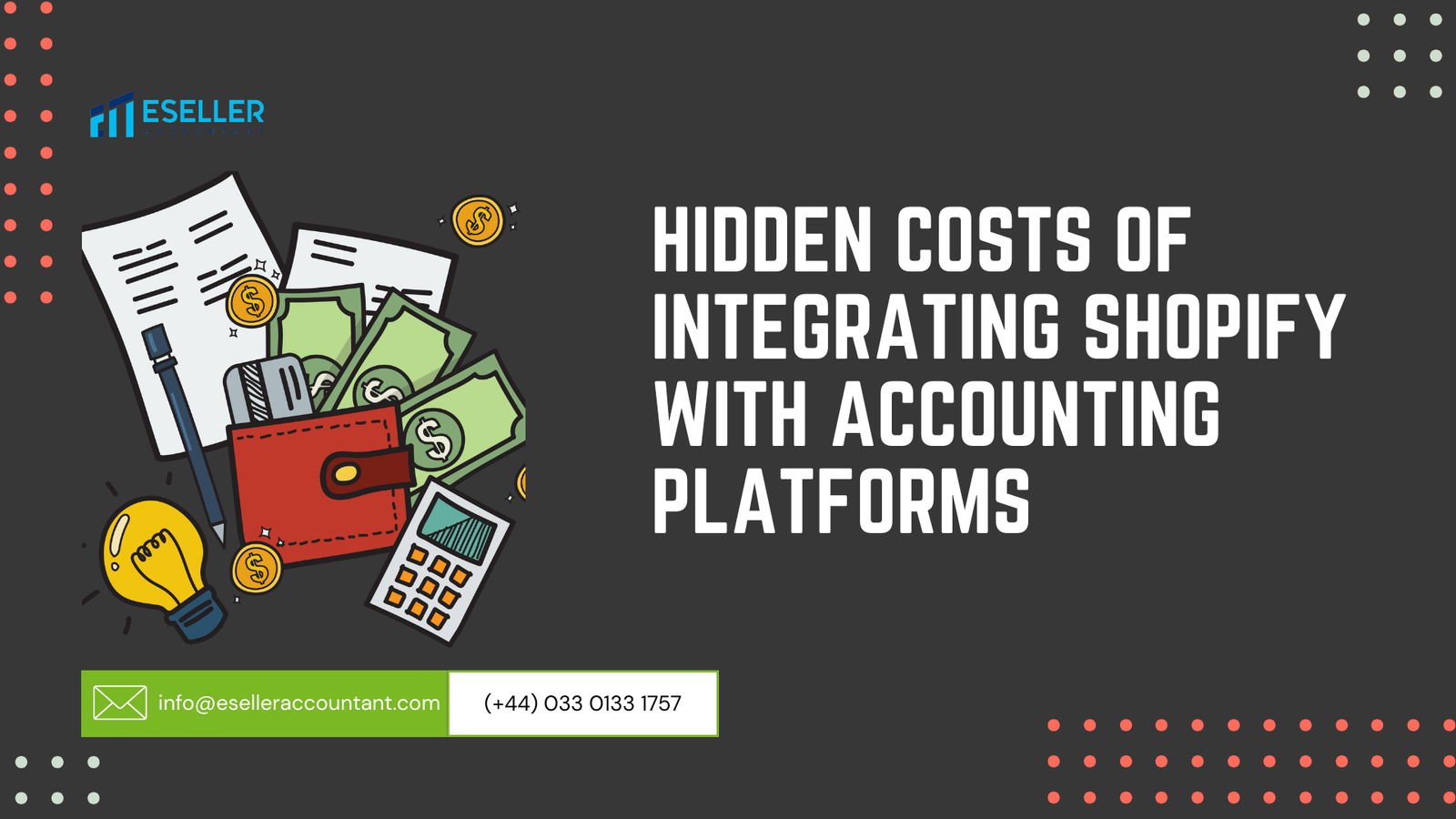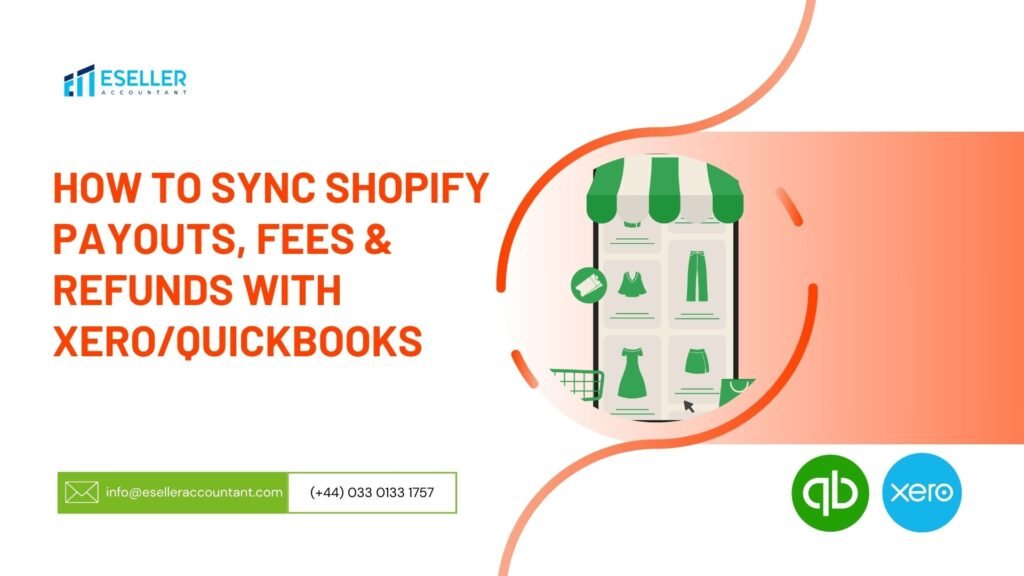Managing your Shopify accounting can feel like a full-time job especially when your payouts, fees, and refunds never quite line up in Xero or QuickBooks. If you’re spending hours chasing down differences, plugging numbers into spreadsheets, or dreading VAT returns, you’re not alone. For online sellers, eCommerce reconciliation is often the hardest part of bookkeeping.
But here’s the good news: you can automate the entire process. With the right approach, every penny from your Shopify sales, fees, and refunds will flow straight into your accounts, matched to the penny no manual work, no more confusion. This guide explains exactly how to do it, the mistakes to avoid, and how eSeller Accountant can help you finally take control of your finances.
Why Shopify Reconciliation is So Tricky
Shopify payouts don’t tell the whole story. Each deposit you receive has already had processing fees, refunds, and sometimes other adjustments deducted. When you only sync sales data to Xero or QuickBooks, you’re only seeing part of the picture. The result? Your accounting system shows more income than what actually lands in your bank and your expenses are hidden.
If you’re a busy seller, this means:
- Your sales in Xero or QuickBooks are too high
- Fees and refunds go missing, so profit is overstated
- Reconciling your bank account becomes a nightmare
- VAT and tax returns can be inaccurate
Getting it right matters not just for peace of mind, but to stay compliant and unlock the real insights you need to grow your business.
What Gets Missed If You Only Sync Sales
It’s tempting to just sync sales and call it a day, but that approach leaves you in the dark. Here’s what gets missed:
Payment Processing Fees
Every payment provider Shopify Payments, PayPal, Stripe, Klarna, and others—takes a fee before you ever see your money. If you don’t sync these fees into Xero or QuickBooks, you’ll:
- Overstate your sales revenue
- Understate your business expenses
- Lose sight of your true margins
Refunds and Chargebacks
Refunds are a reality of eCommerce, and so are occasional chargebacks. If these aren’t synced:
- You risk claiming VAT on sales you actually refunded (potentially a compliance issue)
- Your books show more income than you actually received
- Your bank feed never matches your reported sales
Other Deductions and Adjustments
There’s more to Shopify payouts than just sales and refunds:
- Shopify Capital repayments
- Currency conversion fees if you sell internationally
- Manual adjustments or settlements
If these aren’t brought into your accounts, your figures will always be incomplete.
Multi-Gateway and Multi-Channel Complexity
Many sellers use multiple gateways PayPal, Stripe, Klarna, Afterpay or even sell on more than one platform (e.g. Shopify, Amazon, eBay). If each isn’t mapped correctly, reconciliation becomes almost impossible.
Bottom line:
If you only sync sales, your books will never balance, your VAT returns may be wrong, and you’ll never get a true view of your business performance.
How to Get a Full Payout, Fee & Refund Breakdown
To truly automate and reconcile your accounts, you need a system that captures everything: sales, refunds, fees, and any other adjustments.
What Should Be Synced?
- Gross Sales: The total of all orders before deductions
- Refunds: Full and partial refunds, chargebacks, returns
- Payment Fees: Shopify, PayPal, Stripe, Klarna, and others
- Discounts: Promotions and voucher deductions
- Third-Party Gateway Fees: For any non-Shopify payment processors
- Other Adjustments: Currency fees, Shopify Capital, manual settlements
The Right Tool for the Job
Modern sync apps (like A2X, Link My Books, Synder) fetch your payout data from Shopify and create a summary breakdown that matches exactly what’s deposited into your bank. These apps are designed for eCommerce, not generic sales syncing they:
- Post one summary journal or invoice per payout
- Map every component (sales, fees, refunds, etc.) to the correct account in Xero/QuickBooks
- Support multi-currency and multiple payment gateways
- Handle VAT/GST mapping for full compliance
Recommended App Settings for Accurate Shopify Sync
Choosing the right app is half the battle. Setting it up properly is the other half. Here’s what eSeller Accountant recommends for perfect Shopify-to-Xero/QuickBooks automation:
Payout-Based Posting
Always use payout-based (not order-based) syncing. Each Shopify payout gets its own summary entry. This means what you see in your bank is exactly what’s shown in your accounts.
Separate Accounts for Each Component
- Shopify Fees: Map to a dedicated expense account
- Payment Gateway Fees: Each provider (PayPal, Stripe, Klarna, etc.) gets its own account
- Refunds: Use a separate “Refunds Given” account, correctly mapped for VAT/GST
Accurate Tax Mapping
- Assign the right VAT/GST codes to every transaction type (sales, fees, refunds)
- Make sure refunds reverse VAT/GST properly, for full compliance and accurate tax returns
- Remember: most fees are “out of scope” or “exempt” from VAT
Multi-Gateway and Multi-Channel Support
If you use more than one payment provider, map each one to its own clearing account. If you sell on Amazon, eBay, Etsy, or others in addition to Shopify, consider a sync solution that brings all platforms together—so your books are always up to date.
Regular Reviews
Whenever you add a new payment gateway, start selling internationally, or add a new product category, review your app’s mappings and settings. This keeps your books accurate as your business grows.
Reconciling in Xero/QuickBooks—Step-by-Step
With the right sync in place, reconciliation is finally easy and fast.
How It Works
- Shopify payout lands in your bank account
- Sync app posts a matching journal or invoice in Xero/QuickBooks, showing the breakdown (sales, fees, refunds)
- Open your bank feed, find the payout, and match it to the synced entry
- Click “OK” in Xero or “Confirm” in QuickBooks. Done!
Troubleshooting
If the payout doesn’t match automatically:
- Check your sync app’s logs for errors or missing mappings
- Ensure all payment gateways and refund types are set up
- Re-sync the payout period if needed—most problems are fixed in minutes
Pro tip:
Regularly review unmatched transactions. If something looks off, fix the mapping in your sync app, then re-sync that period.
Better Reporting & Compliance: The Real Benefits
Getting your Shopify payouts, fees, and refunds synced properly doesn’t just save time. It unlocks better business insight and protects you from compliance headaches.
Clear, Accurate Reports
- Know your true revenue, net of all fees and refunds
- Instantly see how much you pay in processing fees each month
- Track refunds and chargebacks, so you know your real profit margins
VAT & Tax Compliance
- Avoid VAT overclaims by properly syncing refunds
- Record all sales and adjustments with the right tax codes
- Keep a complete, auditable record for HMRC or other tax authorities
Ready for Growth
- Multi-currency and multi-channel support means your books scale with you
- Make smarter decisions with accurate, real-time financial data
Why eSeller Accountant?
You could try to set this up yourself, but eCommerce accounting is complex and easy to get wrong. eSeller Accountant specialises in online sellers—and we know exactly how to automate Shopify, Xero, and QuickBooks for effortless, accurate books.
What We Do
- Set up, review, and maintain your sync apps
- Ensure every fee, refund, and adjustment is mapped correctly
- Provide VAT/GST and multi-currency compliance for UK and international sellers
- Deliver proactive advice as your business grows—new channels, gateways, products
Our clients gain hours back each month, reduce costly mistakes, and gain the confidence to make better decisions. You get cloud accounting that works for you, not against you.
Frequently Asked Questions
Can I sync Shopify refunds to QuickBooks automatically?
Yes! With the right sync app (like A2X, Link My Books, or Synder), all refunds—full and partial—are posted straight into QuickBooks, mapped correctly for income, VAT, and reporting.
What if I use multiple payment gateways on Shopify?
Choose a sync app that supports every gateway you use. Each payout (Shopify Payments, PayPal, Stripe, Klarna, etc.) is mapped to its own account in Xero or QuickBooks. This way, reconciliation is simple and your fees are tracked separately.
How do I handle multi-currency payouts?
Leading sync apps support multi-currency and automatically convert payouts at the correct exchange rates. This ensures your sales, fees, and refunds match up in your home currency and keeps VAT calculations correct.
Will syncing everything slow down my accounting software?
No—if you use summary (payout-based) posting. Instead of pushing hundreds or thousands of individual orders, one entry per payout keeps your accounts fast, clean, and easy to manage.
What about VAT on refunds and fees?
The right setup ensures VAT on refunds is correctly reversed and fees are marked as “out of scope” or “exempt,” so you’re fully compliant and never over- or under-claiming tax.
Can eSeller Accountant help if I also sell on Amazon, eBay, or Etsy?
Absolutely. We specialise in multi-channel eCommerce and can set up, review, and automate all your platforms—so your entire business is always in sync and ready for growth.
Conclusion: Make Shopify Accounting Effortless
Getting Shopify payouts, fees, and refunds to sync perfectly with Xero or QuickBooks isn’t just about tidying up your books—it’s about finally seeing the true picture of your business. When every sale, every refund, and every fee is tracked and reconciled automatically, you get more than just cleaner accounts. You gain time, confidence, and freedom to focus on growth.
Manual bookkeeping and spreadsheet guesswork are no match for a modern, automated workflow. When you stop worrying about reconciliation, you can focus on new products, better marketing, or even just a well-earned weekend off. Clean, real-time data isn’t just a convenience—it’s a strategic advantage in today’s fast-paced eCommerce world.
With eSeller Accountant on your side, you get more than just a setup—you get a partner. We help you automate the hardest parts of eCommerce accounting, troubleshoot issues, and stay ahead of compliance changes. Whether you’re a UK VAT-registered seller, going global, or juggling multiple stores, we’re here to make your success effortless.
Ready to stop wrestling with Shopify, Xero, and QuickBooks?
Contact eSeller Accountant today for a free, jargon-free consultation. Let’s turn your books into your strongest business tool and help you reclaim hours every month.
Say goodbye to manual reconciliation. Choose eSeller Accountant and unlock a simpler, smarter way to run your eCommerce finances.

